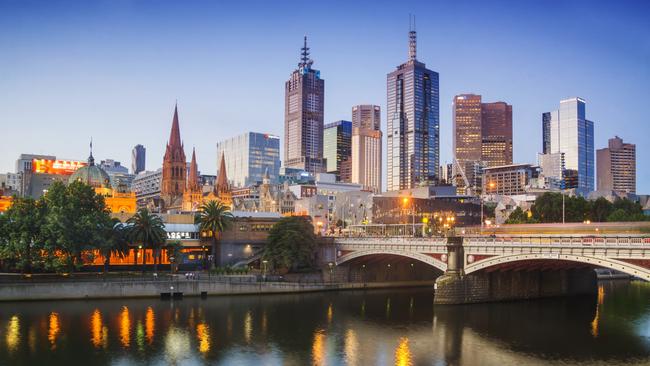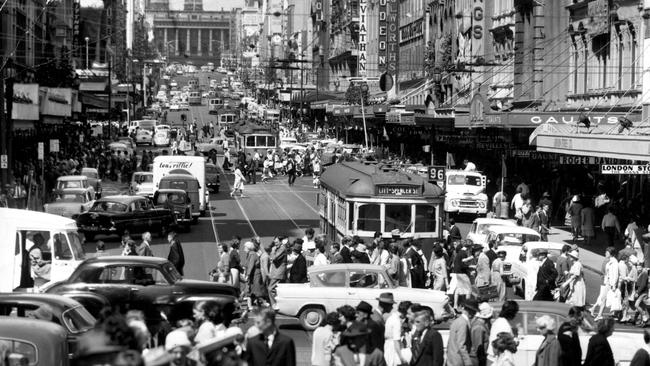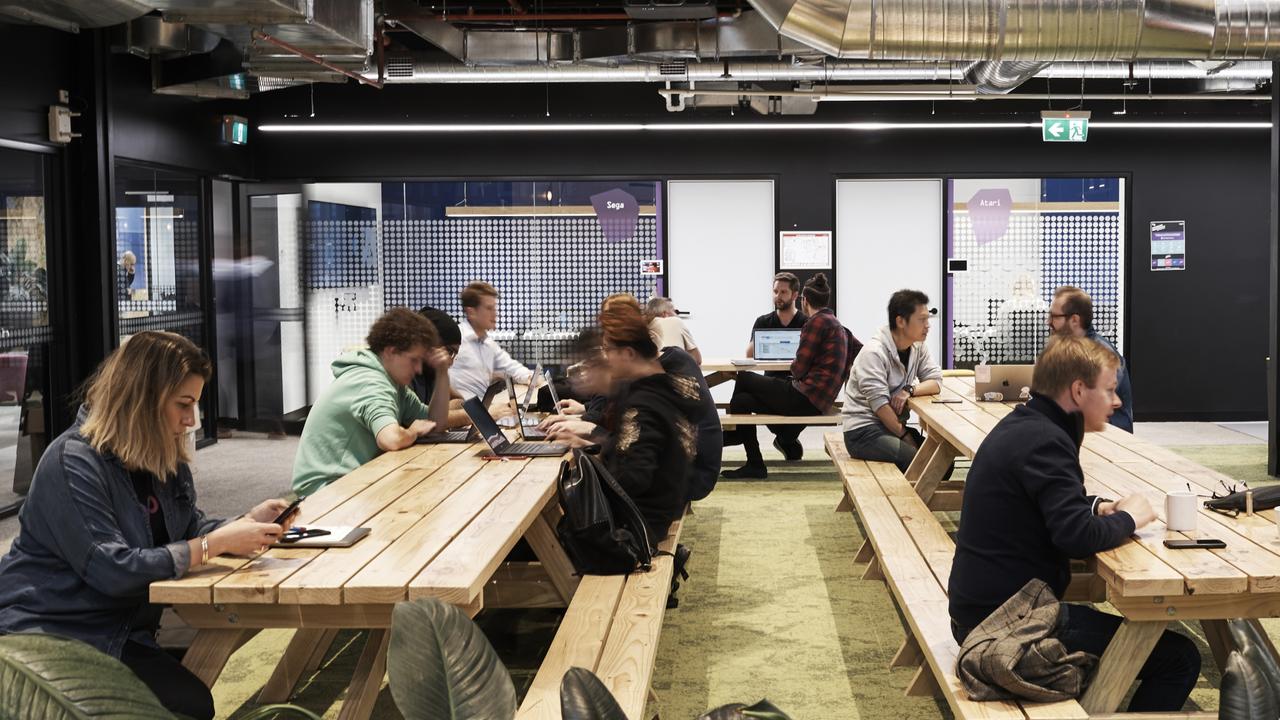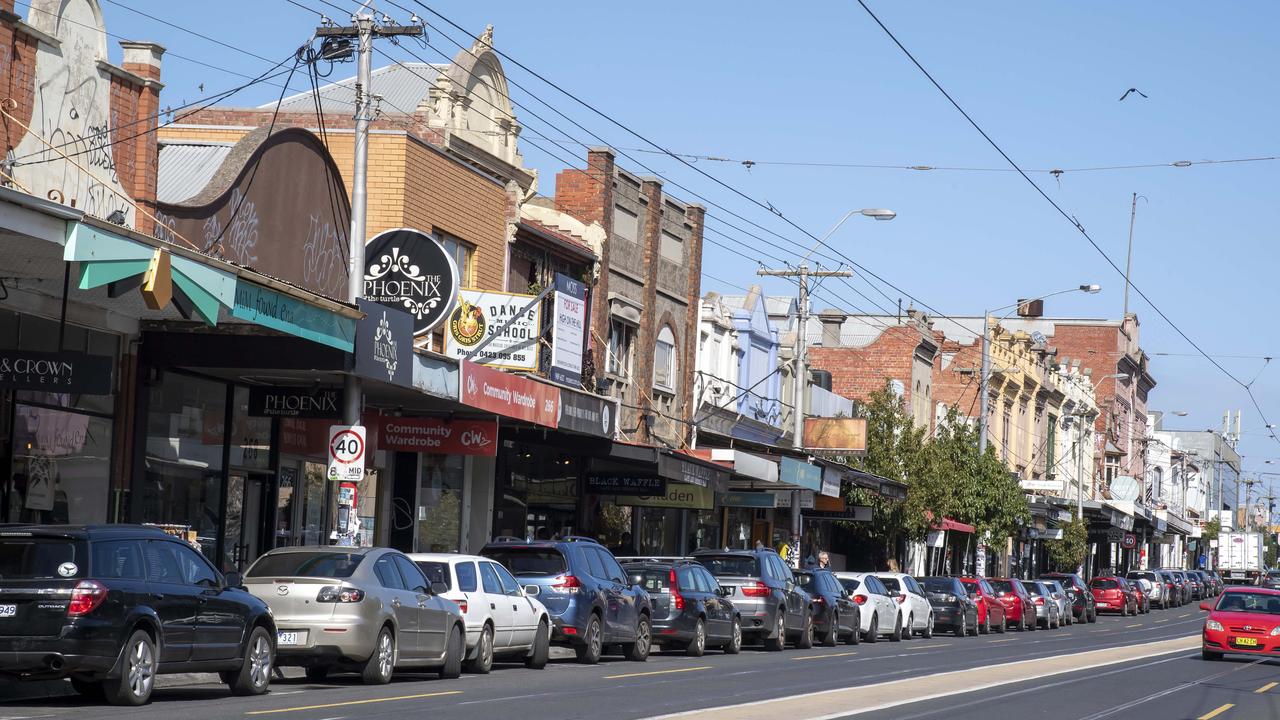Future Melbourne: Why Melbourne is still the most liveable city in the world
IN ITS heyday it was called “Marvellous Melbourne’’, and at other times “Smell-bourne’’ but now it’s simply the world’s most liveable city.

Future Victoria
Don't miss out on the headlines from Future Victoria. Followed categories will be added to My News.
- Future Melbourne: What’s it all about?
- It’s time to weatherproof the MCG
- In which direction will Melbourne grow?
- What’s planned for Melbourne’s CBD of the future
- New suburbs to grow from Melbourne’s industry ashes
IN ITS heyday it was called “Marvellous Melbourne’’, and at other times “Smell-bourne’’ but now it’s simply the world’s most liveable city.
For six years in a row the respected Economist Intelligence Unit has ranked Melbourne at the top of the world city livability list. It’s a title we wear with pride but there’s a sneaking suspicion that it won’t last — and worst of all, Melbourne could slip down the rankings as our suburban sprawl and population pressures squeeze the key elements of livability from our communities.
But the pressures we feel now — the congestion, the housing issues, the fights over green spaces — are not new.
In 1929, the first major one, Plan of General Development Melbourne, was released with lots of ambitious project ideas to deal with issues such as growing traffic congestion, the distribution of recreational open space and haphazard intermingling of land uses.
The problem then — as now — was to commit to solutions.

Former VicRoads senior executive Dr Max Lay said that partly because it the Plan was issued during the Great Depression the report had “no committing actions”.
“(There were) specific instances where its recommendations have come to pass, but in retrospect many were planning fantasies,” he wrote in his book Melbourne Miles: The Story of Melbourne’s Roads.
Other plans that were closer to reality followed and over the decades Melbourne has muddled through to become a major metropolis of 4.5 million people and despite all of that, with an enviable international reputation.
It has built up an impressive array of infrastructure, including a significant highway and public transport network, as well as a world-class healthcare system and sporting precinct.
Melbourne has grown more than any other Australian city over the past decade — at a rate of about 200 extra people a day — and its jobs growth outstripped the nation between 2001 and 201l.
But these gains have been hard-won and reflect a city that emerged from significant challenges, especially during the 1970s and 1980s. And according to Melbourne economist Marcus Spiller nothing summed that up better than the film clip for AC DC’s Long Way to The Top, filmed in 1976 with the band in the back of a flatbed truck, heading down Swanston St. “Viewers are presented with a CBD bereft of people and dominated by B-grade architecture. Central Melbourne looked, and felt, “provincial’, ‘’ he wrote recently.


Within years, the “provincialism’’ gave way to ‘’rust belt’’ as the tariff walls came down from industry in the 1980s and Victoria’s critical manufacturing industry took a huge hit. Beset by the financial disasters triggered by the collapse of the Pyramid building society and merchant bank Tricontinental, Melbourne looked and felt like a bloke without a coin to call his own in the early 1990s. And there was an exodus north, where the weather was warmer and the jobs more plentiful.
But change was afoot. According to Dr Spiller a range of innovations, from the postcode 3000 initiative that encouraged more city living, an emphasis on the Yarra River and Southbank, a freeing up the university sector that stimulated international student numbers and a reform of liquor laws that ushered in an era of licensed food outlets and bars around the Melbourne retail centre, helped revitalise the city.
Twenty years later, the result is that inner Melbourne is booming — a quarter of all Victorian jobs are clustered there, compared with 49 per cent in the suburbs and 26 per cent in the rest of the state.
About 130,000 people live in the City of Melbourne, but on average 854,000 others use the inner city each day, and Melbourne hosts over a million international visitors annually.
Once a soulless precinct, the CBD is now a globally recognised centre of cafe culture. The inner city has experienced a mighty apartment boom after developers, mainly foreign-based, took advantage of liberal planning policies to transform the skyline with high-rise towers.
Greater Melbourne has among the world’s most culturally diverse population, with more than a third of residents born overseas.

Our suburban expansion is continuing apace, with new housing estates proliferating on the city’s southeastern, western and northern fringe.
The danger is that we are becoming the victim of our own success as infrastructure and services struggle to keep up with relentless demand.
The figures tell the story.
Metropolitan train boardings increased from about 120 million in 1999-2000 to around 220 million in 2012-13.
Traffic movements, as measured by passenger vehicle kilometres, increased by 4.6 billion km between 2001-2011.
And Melbourne has the dubious distinction of being ranked the fourth least affordable city on the international housing affordability scale.
This is no surprise to residents who have seen the median house price rise from less than $400,000 a decade ago to $725,000 now — not far off from a 100 per cent jump.
Rampant population growth has clearly caught successive governments off guard. Plans have come and gone. Investment in significant public transport upgrades has been abysmal. The long-touted Melbourne Metro Rail project has been announced but is still in the planning stages.
Freeway construction has fared better over the years, however, the abandoned East West Link project has sullied Victoria’s reputation and meant that construction of this essential transport connection will be put off for maybe decades.
An airport rail link, promised at the last election by the previous state government, is also off the agenda.
On the positive side, the $5.5 billion Western Distributor, an alternative Yarra River crossing to the West Gate Bridge, has been given the green light; while serious work is underway to remove Melbourne’s congestion-causing level crossings.
Back on the agenda is the North East Link, the “missing link” between the Eastern Freeway and the Metropolitan Ring Rd.
This project would relieve pressure on local roads as up to 40,000 vehicles travel between the two freeways each day.
A key issue is identifying the jobs of the future and where they will be located. Current trends indicate that jobs are being concentrated towards inner Melbourne — a problem when you consider that urban sprawl is causing a mismatch between place of employment and home.
By 2046, it’s predicted that manufacturing will no longer be among the state’s top five employers and retail trade will drop from second to fifth.
Instead, it will be jobs in health care and social assistance, followed by professional, scientific and technical services, then education and training, and construction.
Our university, research and health sectors will play a vital role in driving much of this employment, especially around innovation and collaboration with industry. The challenge will be to ensure that opportunities are maximised in terms of land use, funding priorities and transport links.
Recent blueprints such as Plan Melbourne and Plan Melbourne Refresh have studied these issues, including the ongoing tension between further development on the urban fringe and higher density housing in inner and middle ring suburbs.
Luckily, inner Melbourne is blessed with big tracts of former industrial land that have been set aside for housing and commercial development.
Docklands, which is just over half completed is the best known, but nearby are the Fishermans Bend and E-Gate urban renewal sites that promise to eventually house tens of thousands of residents.
Docklands is a reminder to government that developers were initially allowed to build high-rise towers without proper consideration of local amenity.
Much work has gone into retrofitting Docklands to make it more people-friendly, but there is still a long way to go.
Amid this booming population are the inevitable concerns about community safety, especially cyber security in the digital age. Melbourne, like every other major urban centre, is planning for the best way to protect its citizens from any threats to their digital identity.
These are the pressures on Melbourne’s much-admired livability. During the next 10 days, The Herald Sun Future Melbourne campaign will confront these issues and propose solutions to help ensure our city maintains its status as the world’s most liveable city.



